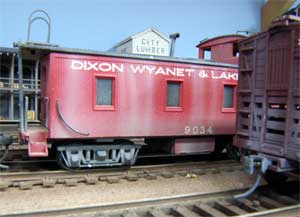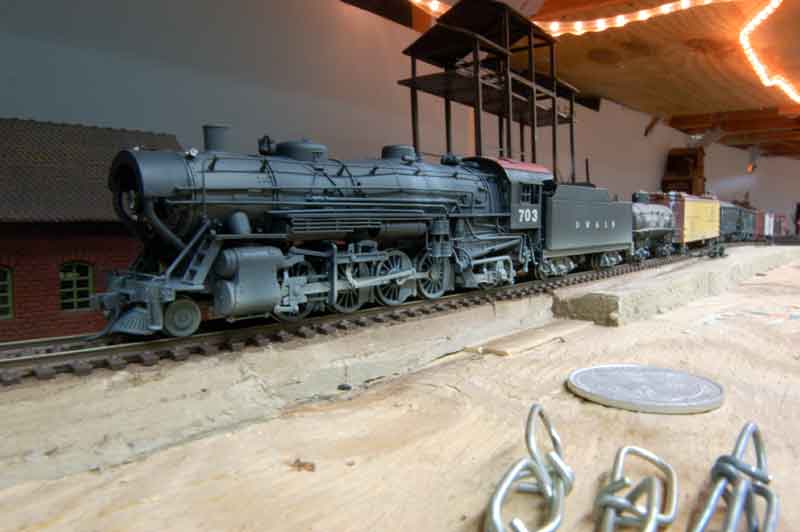

  |
|
The DW&LS operations have been streamlined in an effort to create a more realistic June 15 to July 15 1929 setting for an all steam mix of working local freights and through freight and passenger trains. Timetable and Train Order operation with a 2:1 clock ratio. Three main yards and several industry jobs with staggered starting times according to location and duties. Bring Fred and Wilma, maybe Dino. Control is DC with rotary switches in keeping with earlier era. HO scale. Report on op session by Mike O'Brien. |
|
I have admired operations on this layout since the late 1980s when John first wrote about it for Prototype Modeler magazine. I began my interest in prototype operations--as opposed to model railroad play ideas--because of those articles. I believe the idea for 4-sided waybills in car card pockets came from this layout. I enjoyed an all-day op session here in April 2006 as part of an operations convention in Chicago. This is a larger version of the old layout, and makes full use of the basement space available. There is no helix, as the mainline wraps around the basement a couple of times gaining elevation. It is walkaround, of course, with all trackwork within reach of the generous aisles. The layout has an "in-progress" feel, with construction proceeding along gradually at most places. Obviously, the operations system takes precedence over scenery construction. Operationally, the layout owner is very serious, and all the various rules are expected to be strictly obeyed. I like it that way. We are trying to simulate a real railroad. Though the DW&LS is freelanced, it tries to be as real as possible. We had a crew of 19 people NEW to this layout. Imagine being a layout owner and having to orient all these folks and get them to run such a complicated RR successfully! We kept John busy all day running around and helping us. It worked great and we all had a good time. I hope these photos give you an idea of the operations experience.
|
|
|
|
|
|
|
|
|
|
|
|
|
|
|
|
|
|
|
|
|
|
|
|
|
|
|
|
|
|
|
|
|
|
|
|
|
|
|
 John makes beautiful locomotives, and has written many articles about them. |
Email contact: mike at (@) corbu.us -- Mike O'Brien, Pasadena, CA